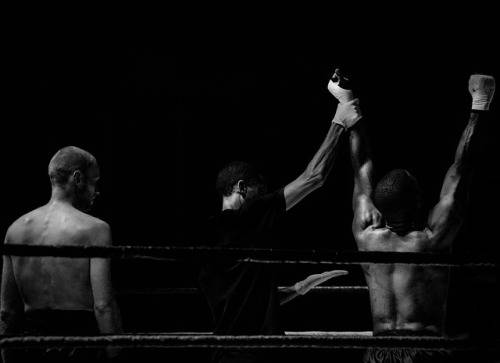
During a bout, referees tend to use a lot of boxing terminologies to describe exactly what is happening. To understand and enjoy those matches, you had better have proper knowledge of boxing. Specifically, if you are new to boxing, the term RTD is often a source of confusion.
Don’t worry! This article will help you figure out some basic terminologies and the RTD Boxing meaning. Let’s get right into it!
Contents
What Is RTD Boxing Meaning?
Normally, boxing referees use the term “RTD” for serious situations among the rounds. RTD is often seen as a negative sign, that’s why boxers should avoid it at all costs. But before entering into details, let’s have a look at some common boxing terms.
Boxing Terminologies
Why should you learn about boxing terms first? The answer is simple! Understanding the intricate terminological details of boxing will help viewers observe the match more effectively.
However, boxing terminologies sometimes might confuse you, especially if you are new to this field. While many phrases point out different movements and sections, other common terms illustrate an assault, such as the jab, hook, cross, uppercut, shoeshine, etc.
Here we provide you with some essential terminologies that you need to know:
- A Bout:
A bout talks about a match, usually known as an organized fight.
- A Clinch:
Clinching is the act of leaning on others for support. The referee will add a break if clinching occurs between both boxers.
- A Combination:
Just like the name, a combination means the boxers are throwing punches with different techniques at the same time.
- A Knockdown:
When someone receives a blow from the opponents and falls to the ground during the match, it is when the knockdown occurs. Having one part of the body other than the feet touch the ground is considered a knockdown.
- A Knock Out (KO):
It is an automatic win for the boxers if the referees say knock out. KO is when the opponent is knocked down for over 10 seconds and can not continue the fight.
- A Low Blow:
A low blow is usually a foul throwing a blow below the belt.
- A Neutral Corner:
The corner that boxers retreat themselves after knocking down the opponents is called a neutral corner.
- A Ring:
The playing area of a fight is a ring. People use four ropes to enclose this area.
- Rounds:
Each round has 3 minutes included with a 1-minute break.
- A Split Decision:
A split decision happens when 2 out of 3 referees decide one boxer is a winner, while the third referee disagrees and chooses the opponent as a winner.
- Weight Classes:
The matches are divided into various classes depending on the weight of each boxer to confirm fairness.
- A Weight In:
It happens before a match and refers to weighing the boxers to ensure whether it is suitable for them to fight in the weight class.
RTD Boxing

RTD in boxing is often known as referee technical decision related to a corner retirement in between rounds. It occurs due to the boxer’s own decision or his team that the boxer fails to come out for the next round. They then might receive tons of criticisms for being a quitter no matter how strong they come back on stage.
One of the famous examples of boxers receiving bad comments for giving up halfway is the match between Victor Ortiz and Josesito Lopez. Victor had his jaw injured badly during the 8th round and refused to continue on the next one. He received a lot of negative comments because people thought he did not deserve to be a boxer for not fighting until the final round.
Another example is in the WBO heavyweight title fight between Chris Byrd and Vitali Klitschko. Klitschko had an accident and seriously injured one of his shoulders. Even though he tried to sustain the pain during the fight, he still had no option but to stop after the 9th round before it got worse. He has potentially saved his career, but people criticize him for not fighting till the end.
Similarly, there are many more cases around the world in which boxers have RTD. You can search for them if you want to understand more about the meaning of RTD in boxing.
What Is The Difference Between RTD And TKO?

An RTD usually refers to boxers choosing to stop participating in the next round. Meanwhile, TKO is used when the ring doctor or the referee calls off the fight. Many boxers are accidentally accused with TKO under unclear circumstances. This misunderstanding might cause a lot of trouble for him/her if this kind of misconception continues.
>Read more: Casanova boxing gloves illegal
Conclusion
Boxing is an ambitious type of material art, so it requires boxers to be extremely passionate and determined.
Fully understanding boxing terminologies is very important because terms like RTD can actually damage one’s profession. If you are someone who is interested in boxing or an amateur boxer, we encourage you to do research about boxing idioms and phrases. This not only helps you observe the match effectively but also upgrades your knowledge about the field.
Hopefully you will feel satisfied with our thorough information in the article “RTD Boxing meaning – Things you should know”. See you next time!

With a passion for combat sports and a wealth of experience, Mike Colon stands as a seasoned figure in the world of martial arts, hailing from the vibrant city of Las Vegas, Nevada. Mike has honed the skills of numerous fighters, guiding them through the intricacies of the sweet science of Boxing and the multifaceted challenges of MMA.
